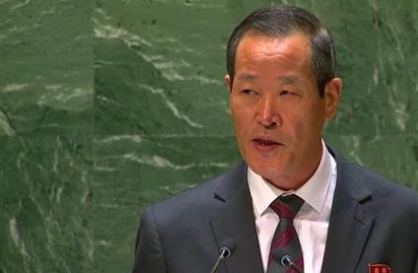A silver lining in the dark cloud of the deficit reduction supercommittee’s failure is that it gives Americans another chance to do the right thing to control health care costs. To save money, we must move beyond administrative fiat and put patients first.
The problem is illustrated by the “sustainable growth rate” legislation to control physician payments by Medicare. The sustainable growth rate has been repeatedly countermanded by Congress, an issue that might have been addressed by the supercommittee. As a doctor, I can tell you that most practicing physicians in the country are now fixed on it with laser-like intensity. Lacking any solution, the clock is ticking. Doctors’ Medicare payments will be cut severely on Jan. 1 if nothing is done. The problem is the context in which health care costs are addressed.
Some years back, Tom Scully, a previous administrator of Baltimore-based Centers for Medicare and Medicaid Services, was reported in The Wall Street Journal to have likened cutting Medicare costs to the carnival Whac-a-Mole game: “When spending shoots up, you whack it down.” I hope Mr. Scully’s statement was made in jest. Indiscriminate cuts are not the answer. Two separate studies, from the University of North Carolina in 1985 and University of York in 2006, showed that the response to decreased reimbursement for a procedure may be to increase the number of procedures done, which can cost more because of the additional use of resources: facilities, medicines and personnel. Such accounting solutions also ignore the patients.
Instead, the U.S. can decrease health care costs by focusing on the quality of care that doctors provide. The Organization for Economic Cooperation and Development has just reported that the U.S. annually spends $3,000 more on health care per person than even the richest other countries ― a total of $900 billion more ― and U.S. health statistics are, to say the least, not correspondingly better. We can save many billions of dollars on health care not by rationing but by restraining costs that are not helping patients.
Where are the savings from concentrating on quality? Start with the well-known issue of overutilization: performing tests and treatments that are not indicated, even if insurance will pay for them and the patient wants them. Such practices expose patients to needless risk. Elliott Fisher of The Dartmouth Atlas of Health Care estimates that “perhaps a third of medical spending is now devoted to services that don’t appear to improve health or quality of care.”
Applying that to the $800 billion annual budget for Medicare and Medicaid yields a conservative estimate of savings from controlling overutilization of more than $200 billion. The rest of health care, obtained through private coverage, should yield an additional similar amount. And then there is underutilization: Noncompliance with medical regimens, largely correctable by systems improvements in delivery of care, is costing us $170 billion a year, as reported by Pauline Chen last year in The New York Times. For estimation purposes, we can lump these excess costs of more than $400 billion together, since it is all money out of the taxpayers’ pockets, one way or another.
Contrast that with the sustainable growth rate. It’s simple: Legislation in 1997 specified small annual adjustments for physician reimbursements. But the Medicare budget began to exceed projections, and the law required Medicare payment cuts. With physician lobbying, the cuts were always blocked by Congress. To comply, Medicare now has to cut payments by 27 percent. And all of this is over a relatively small budget item. The sustainable growth rate law pertains to only 13 percent of Medicare expenditures, so making this draconian cut would only yield about $16 billion, whereas the U.S. spends $2.5 trillion on health care annually.
In both the Organization for Economic Cooperation and Development report and the sustainable growth rate statistics, the excess is predominantly in outpatient elective surgery and expensive diagnostic tests, both of which are ripe for overutilization. So Congress can address those rather than cutting the income of the beleaguered family doctor.
Why haven’t these solutions been discussed more openly? Special interests fear loss of income. Before passage of the Affordable Care Act, they had eight lobbyists for every man and woman in Congress. But something must be done. Improving quality is not a mystery. It might be easier to accomplish than our frustrated representatives are leading us to believe. Once we establish that better health for every American is our primary goal, Congress and the administration can focus on the quality measures needed to accomplish it while cutting costs in the bargain.
By James F. Burdick
James Burdick is professor of surgery at Johns Hopkins University School of Medicine. ― Ed.
(The Baltimore Sun)
(MCT Information Services)
The problem is illustrated by the “sustainable growth rate” legislation to control physician payments by Medicare. The sustainable growth rate has been repeatedly countermanded by Congress, an issue that might have been addressed by the supercommittee. As a doctor, I can tell you that most practicing physicians in the country are now fixed on it with laser-like intensity. Lacking any solution, the clock is ticking. Doctors’ Medicare payments will be cut severely on Jan. 1 if nothing is done. The problem is the context in which health care costs are addressed.
Some years back, Tom Scully, a previous administrator of Baltimore-based Centers for Medicare and Medicaid Services, was reported in The Wall Street Journal to have likened cutting Medicare costs to the carnival Whac-a-Mole game: “When spending shoots up, you whack it down.” I hope Mr. Scully’s statement was made in jest. Indiscriminate cuts are not the answer. Two separate studies, from the University of North Carolina in 1985 and University of York in 2006, showed that the response to decreased reimbursement for a procedure may be to increase the number of procedures done, which can cost more because of the additional use of resources: facilities, medicines and personnel. Such accounting solutions also ignore the patients.
Instead, the U.S. can decrease health care costs by focusing on the quality of care that doctors provide. The Organization for Economic Cooperation and Development has just reported that the U.S. annually spends $3,000 more on health care per person than even the richest other countries ― a total of $900 billion more ― and U.S. health statistics are, to say the least, not correspondingly better. We can save many billions of dollars on health care not by rationing but by restraining costs that are not helping patients.
Where are the savings from concentrating on quality? Start with the well-known issue of overutilization: performing tests and treatments that are not indicated, even if insurance will pay for them and the patient wants them. Such practices expose patients to needless risk. Elliott Fisher of The Dartmouth Atlas of Health Care estimates that “perhaps a third of medical spending is now devoted to services that don’t appear to improve health or quality of care.”
Applying that to the $800 billion annual budget for Medicare and Medicaid yields a conservative estimate of savings from controlling overutilization of more than $200 billion. The rest of health care, obtained through private coverage, should yield an additional similar amount. And then there is underutilization: Noncompliance with medical regimens, largely correctable by systems improvements in delivery of care, is costing us $170 billion a year, as reported by Pauline Chen last year in The New York Times. For estimation purposes, we can lump these excess costs of more than $400 billion together, since it is all money out of the taxpayers’ pockets, one way or another.
Contrast that with the sustainable growth rate. It’s simple: Legislation in 1997 specified small annual adjustments for physician reimbursements. But the Medicare budget began to exceed projections, and the law required Medicare payment cuts. With physician lobbying, the cuts were always blocked by Congress. To comply, Medicare now has to cut payments by 27 percent. And all of this is over a relatively small budget item. The sustainable growth rate law pertains to only 13 percent of Medicare expenditures, so making this draconian cut would only yield about $16 billion, whereas the U.S. spends $2.5 trillion on health care annually.
In both the Organization for Economic Cooperation and Development report and the sustainable growth rate statistics, the excess is predominantly in outpatient elective surgery and expensive diagnostic tests, both of which are ripe for overutilization. So Congress can address those rather than cutting the income of the beleaguered family doctor.
Why haven’t these solutions been discussed more openly? Special interests fear loss of income. Before passage of the Affordable Care Act, they had eight lobbyists for every man and woman in Congress. But something must be done. Improving quality is not a mystery. It might be easier to accomplish than our frustrated representatives are leading us to believe. Once we establish that better health for every American is our primary goal, Congress and the administration can focus on the quality measures needed to accomplish it while cutting costs in the bargain.
By James F. Burdick
James Burdick is professor of surgery at Johns Hopkins University School of Medicine. ― Ed.
(The Baltimore Sun)
(MCT Information Services)







![[AtoZ Korean Mind] Does your job define who you are? Should it?](http://res.heraldm.com/phpwas/restmb_idxmake.php?idx=644&simg=/content/image/2024/05/06/20240506050099_0.jpg&u=)










